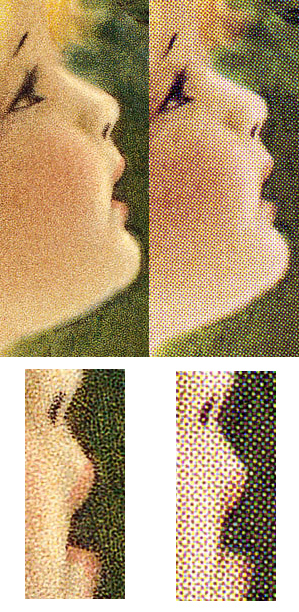Victorian chromolithograph trade card, 1886
One of my first memories of falling in love with Victoriana was my introduction to Victorian scrap in the form of
chromolithography. For several years at Christmas, my grandfather would buy me a German gingerbread
cookie from a local German bakery. The cookie was in the shape of St. Nick, and always had a beautiful replica of a
Victorian German chromolithograph of St. Nick printed on embossed paper and stuck to the cookie with a bit of icing. I pulled it off carefully and saved a few over the years. I always admired the colors and the art. I'm still able to find the cookies, but the art they use isn't as Victorian as the ones I used to get.
Modern day versions of the cookies from my childhood
Years later, when I started collecting antiques, some of the most affordable things to collect were original Victorian chromolithographs in the form of calling cards, post cards, die cut scraps, advertisements and other ephemera.
a typical Victorian scrapbook cover, with an Eastlake design
Chromolithographed scrap would come on die-cut, embossed sheets
for you to cut out and paste into scrapbooks or use for crafts!
Think back to the Victorian time. This was the first form of full color art the masses could easily acquire and enjoy! Women and girls collected and pasted this scrap into scrapbooks, or bought framed chromolithographs to hang on the wall. Before chromolithography, only the affluent could commission or buy an oil painting. Color photography didn't exist. Hand-tinted photographs and prints were to be had, but the labor it took to hand tint these made them still harder to afford for most people. Hand-tinted prints and photos were often "
tipped in" to books and folios, with tissue carefully protecting these delicate images.
What fun it must have been when the chromolithograph came along! From the mid 1800's through the turn of the century, the chromolithograph had it's heyday.

Let me explain a little bit about the process. A picture was created by laying down specific colored areas one at a time using grease crayons and stippling to create an image. Skilled artists copied oil paintings or created original works of art by hand. The artist had to know where and how much stippling was needed to fill each area so that when the colors were all together, a believable image was formed. These artists only worked in black and white, for they were creating their art on lithograph stones. Each stone represented one color, and several stones were used to achieve the final result. It was very labor intensive work, but when complete, multiple copies could be made, and the print mass produced. This, in the end, brought the cost down. The image above shows the chromolithograph on the left and a reproduction using 4-color process separation on the right.
Louis Prang Christmas card, chromolithograph 1870s
The advent of chromolithography brought us mass-produced Christmas cards, Valentines and every holiday card and postcard imaginable! Manufacturers and businesses advertised with full color giveaways including trade cards, calendars, postcards, and scrap as well as colored labels and packaging. Some famous chromolithographers include
Louis Prang (Father of the American Christmas Card) and Currier & Ives (Better known for their hand-tinted lithographs).
Some nice examples of chromolithographed Victorian scrap
A typical Victorian calling card. Scrap was glued down on one side only.
When it was lifted up, the name of the caller was revealed.
Victorian chromolithograph trade cards
With the discovery of the photographic process of color separation (which photographically and now digitally breaks an image down to its basic components using the four colors of cyan, magenta, yellow and black to virtually create the illusion of the full spectrum), it was no longer necessary for an artist to manually break an image down into dots. (An interesting note: the
Impressionism and
Pointillism art movements of the late 19th century used this same theory to create tiny dots of brush strokes to create a similar illusion!).
"Sunday Afternoon on the Island of La Grande Jatte" by Georges Seurat
The Art Institute of Chicago. Pointillism at its finest!
Well I admit, I was a color theory geek in college as I studied fine art and graphic design. I'm in love with the chromolithograph. If you're lucky enough to have some original Victorian chromolithographs, take out a loupe or magnifying glass and take a close look. You will be looking back in time to a dead art form.
Some great references:
Labels: Christmas, Entertainment
 My birthday falls on December 21st, the Winter Solstice, the shortest day of the year. It's really not a good time of year for a birthday, because it often gets lost with the Christmas rush.
My birthday falls on December 21st, the Winter Solstice, the shortest day of the year. It's really not a good time of year for a birthday, because it often gets lost with the Christmas rush.